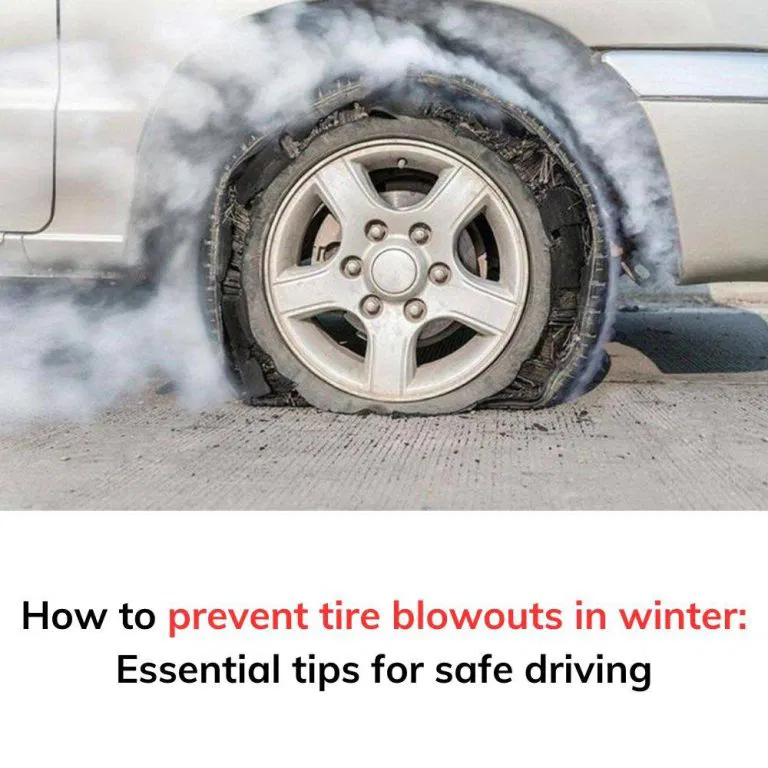Tire blowouts can be a frightening and dangerous experience, particularly in the winter when driving conditions are already difficult. The risk of blowouts is increased by cold temperatures, icy roads, and poor tire maintenance. Here are some helpful tips to help you avoid tire blowouts and drive safely all winter long.

1. Keep your tire pressure at the right level
Tire pressure decreases in cold weather. Tire pressure can fall by roughly 1 PSI for every 10°F reduction in temperature. Driving with underinflated tires lowers fuel efficiency and raises the danger of blowouts.
Check pressure frequently: During the winter, check your tire pressure once a week using a trustworthy pressure gauge.
2. Check for Damage on Your Tires
Potholes, debris, and other hidden dangers can cause damage to your tires on winter roadways.
Examine the tire walls for any obvious signs of wear and strain, such as cracks, cuts, or bulges.
To ensure proper traction, measure the tread depth and make sure it is at least 2/32 inches deep. If necessary, replace the tires.
3. Make use of all-season or winter tires
In icy or snowy situations, regular tires could not function adequately.
Make the switch to winter tires: These tires are made for colder climates and provide superior durability and traction.
Think about all-season options: If you reside in an area with mild winters, good all-season tires can be plenty.
4. Don’t Put Too Much Weight in Your Car
Excessive weight increases the likelihood of blowouts and puts additional wear on your tires.
Verify the weight restriction: According to the owner’s handbook or the label on the door frame, the vehicle’s maximum load capacity should not be exceeded.
5. Warm Up Your Tires Before Driving
Cold tires are more prone to damage.
Drive slowly at first: Allow your tires to warm up naturally before reaching greater speeds.
Avoid sudden movements: Sudden acceleration or harsh braking can stress cold tires.
6. Keep emergency supplies on hand.
Even with every precaution, crises can occur.
Have the following ready:
A spare tire with replacement tools.
An air compressor that is portable.
A roadside emergency pack including warning triangles, gloves, and a flashlight.

